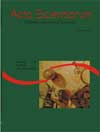<b>A comparative study on the resistance and weakening of the Catholic Group in two Brazilian regions</b> - DOI: 10.4025/actascihumansoc.v30i2.2891
Keywords:
migration, pluralism, catholicism, Pentecostalism, people without religion, census
Abstract
The article A comparative study on the resistance and weakening of the Catholic Group in two Brazilian regions presents the religious diversity in two Brazilian areas – Rio de Janeiro and Minas Gerais – highlighting the relationship between the rates of population mobility and religious pluralism. Texts on Sociology of Religion indicate that the largest diversity indexes are concentrated in the areas that have presented intense demographic flow in the recent decades. In the larger cities such as Belo Horizonte and Rio de Janeiro, such indexes seem to be the result of the migration of the Catholic faithful to Pentecostal churches or to the group of people without religion, whereas in the areas with low level of populational mobility, such as those in the interior of Minas Gerais State, there are still representations of Catholic resistance. Thus, we conclude that the migration to other groups increases where there is great religious supply. The metropolitan area of Rio de Janeiro, where there are the largest indexes of religious diversity in the country, as well as in the area of Ouro Preto, in Minas Gerais State, thoroughly dominated by the Catholics, may be significant cases for our argument.Downloads
Download data is not yet available.
Published
2008-12-18
How to Cite
Gracino Júnior, P., & Rodrigues, D. S. (2008). <b>A comparative study on the resistance and weakening of the Catholic Group in two Brazilian regions</b> - DOI: 10.4025/actascihumansoc.v30i2.2891. Acta Scientiarum. Human and Social Sciences, 30(2), 165-172. https://doi.org/10.4025/actascihumansoc.v30i2.2891
Issue
Section
Social Sciences
DECLARATION OF ORIGINALITY AND COPYRIGHTS
I Declare that current article is original and has not been submitted for publication, in part or in whole, to any other national or international journal.
The copyrights belong exclusively to the authors. Published content is licensed under Creative Commons Attribution 4.0 (CC BY 4.0) guidelines, which allows sharing (copy and distribution of the material in any medium or format) and adaptation (remix, transform, and build upon the material) for any purpose, even commercially, under the terms of attribution.
Read this link for further information on how to use CC BY 4.0 properly.























